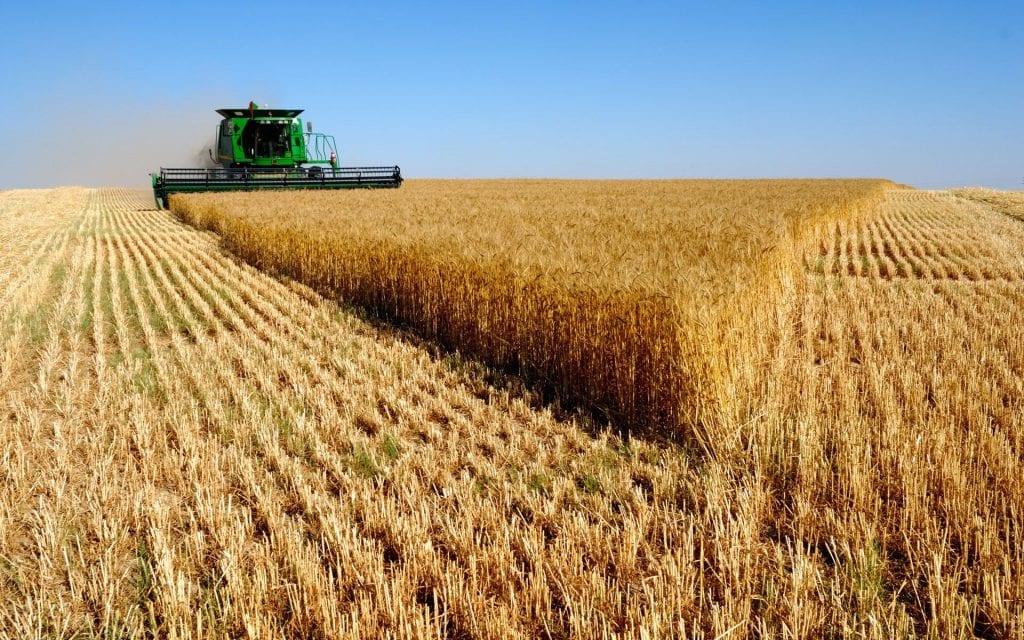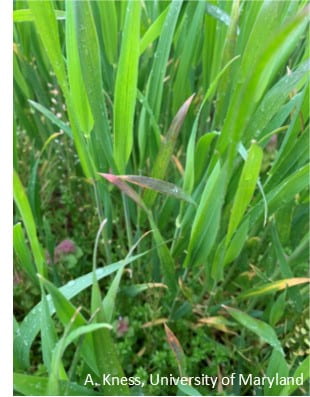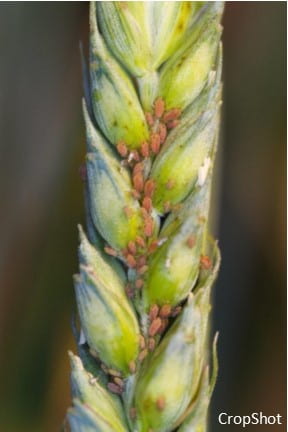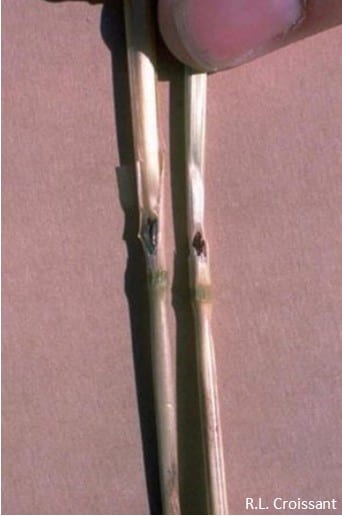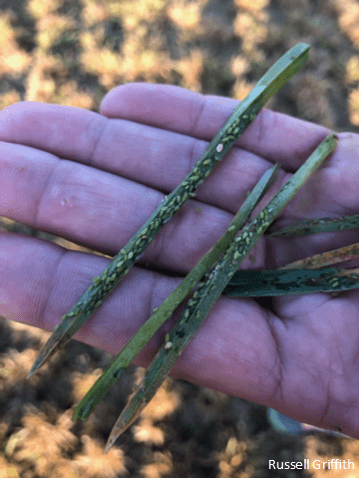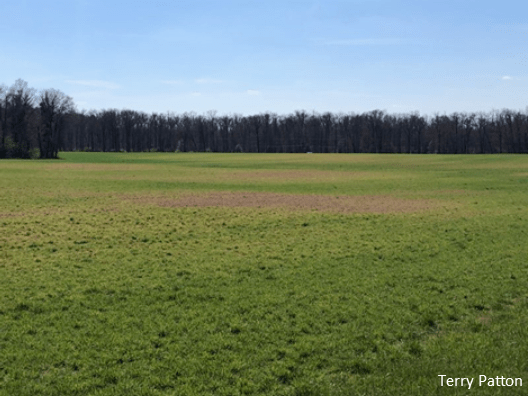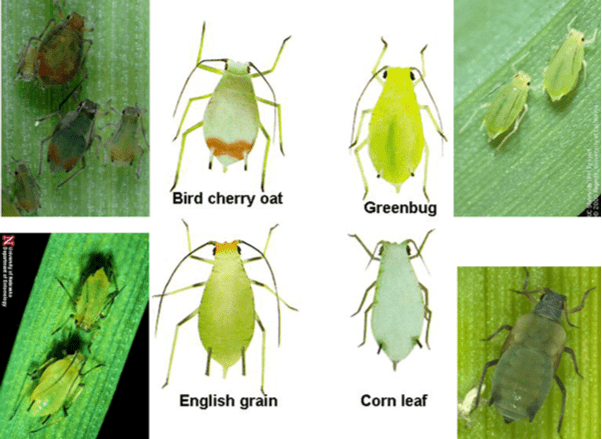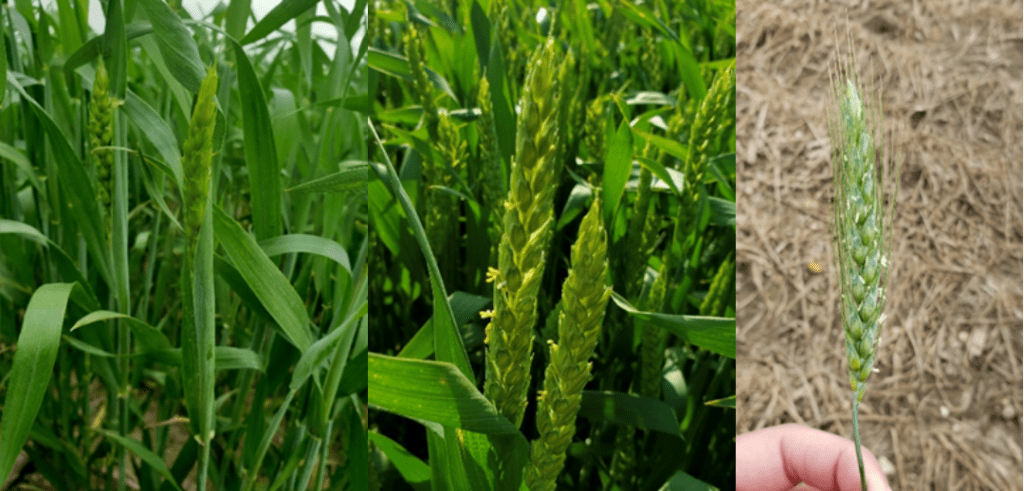Andrew Kness, Agriculture Agent | akness@umd.edu
University of Maryland Extension, Harford County
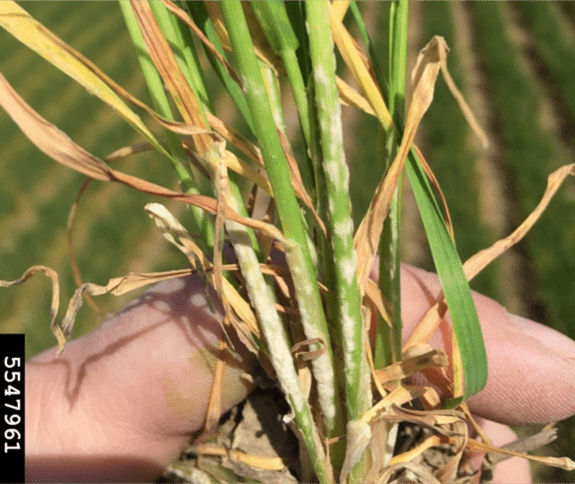
Spring is a busy time on the farm that demands a lot of different tasks; one of the tasks that can be overlooked is scouting your small grains now for the presence of diseases, especially this year considering many areas of the state are off to a wet start. For a few select diseases, scouting now could pay off later in the season.
Most of the wheat in Maryland is somewhere between Feekes 5 (green up) and Feekes 6 (jointing), and most has received its first shot of nitrogen. This is the perfect time to scout your fields for foliar diseases like powdery mildew and the leaf blotch complex diseases.
Powdery mildew (Figure 1) is one of the more common diseases of wheat in our region, although it is typically a non-issue unless it gets out of hand. The fungus that causes powdery typically colonizes wheat in the fall when the plants are small, then goes dormant inside the plant over the winter. Green up is the perfect time to scout for powdery mildew because you will be able to see the powdery white tufts of fungus growing on your wheat plants (Figure 1). These signs are typically observed close to the crown deeper in the canopy and/or on plants that are in double-planted pinch rows or headlands. The disease is often more severe on over-fertilized fields, too. It is good to scout for the presence of powdery mildew now, but do not treat until the wheat begins to joint. Powdery mildew will not begin actively growing until the wheat plant comes out of its winter slumber and begins rapid growth (jointing, Feekes 6), and fungicides have little-to-no activity on dormant fungi. Instead, hold off on a fungicide application until your second nitrogen application at jointing. If you only notice a few sporadic instances of powdery mildew now, you may not even need to treat at jointing, especially if weather conditions become warm and dry. If you decide to hold of on a Feekes 6 application, you’ll still want to keep an eye on it, especially as the flag leaf emerges. The top three leaves, especially the flag leaf, contributes to nearly all of your yield.
Also, know your wheat variety because there are significant differences in resistance and tolerance. Data from University of Maryland, University of Delaware, and Virginia Tech can help you determine your wheat’s susceptibility. In addition, varieties containing the pm6 resistance gene have broken down and are no longer providing adequate resistance here in the mid-Atlantic region, so consider those varieties susceptible.
Similar management should be taken against the leaf blotch complex diseases. If you find them now, hold off on a fungicide application (if at all) until at least Feekes 6. And again, protecting the flag leaf is your main priority, so if the disease is slow to progress due to inadequate weather conditions or host tolerance and the disease is present at low levels, then a fungicide application at Feekes 6 may not be warranted at all. Also, the fungicides we commonly use to manage Fusarium head blight/head scab will also work on powdery mildew and the leaf blotch complex; so our fungicide applications at early flowering typically do a good job at keeping these diseases from progressing to the flag leaf.
For help with identifying diseases on wheat, you can send samples to the University of Maryland Plant Diagnostic Lab, or call your local Extension agent.
